Repetitive stress and other contributors might lead to muscle imbalances over time. These days, our youths are spending their day hunched over desks and phones. Many people have sedentary jobs sitting at a mouse and keyboard staring at a monitor, spending excessive amounts of time in a position of stress! Our heads are slowly falling off our shoulders!
Forward head posture is an abundant dysfunction within today’s society. This muscle imbalance describes a forward-shifted shifted head and forward-rounded shoulders.
Our body wants to keep our head stable and will build tissue to help support this forward head position. Neck and upper shoulder tension, headaches, neck pain, and higher injury risk are all associated with this forward head posture. If we understand the muscles involved we can figure out how to correct these problems over time. The exercises and mobility tools we decide to use will all become important weapons in this war for more functional bodies!
What is a muscle imbalance?
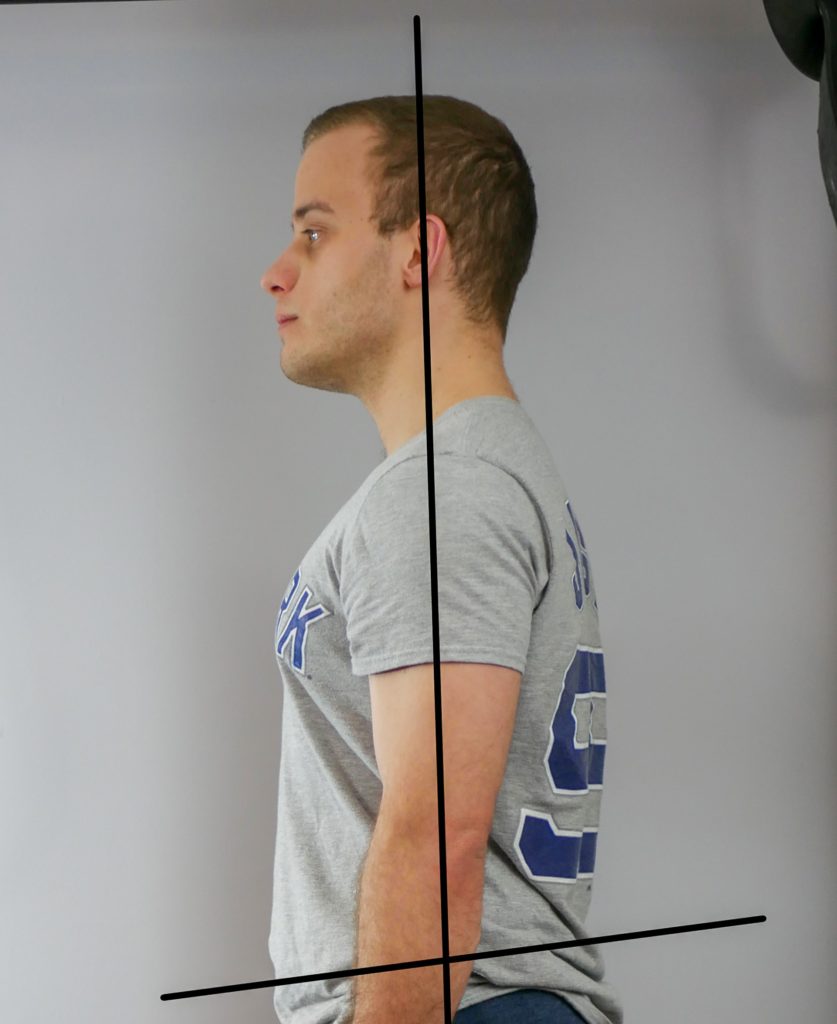
Optimal alignment 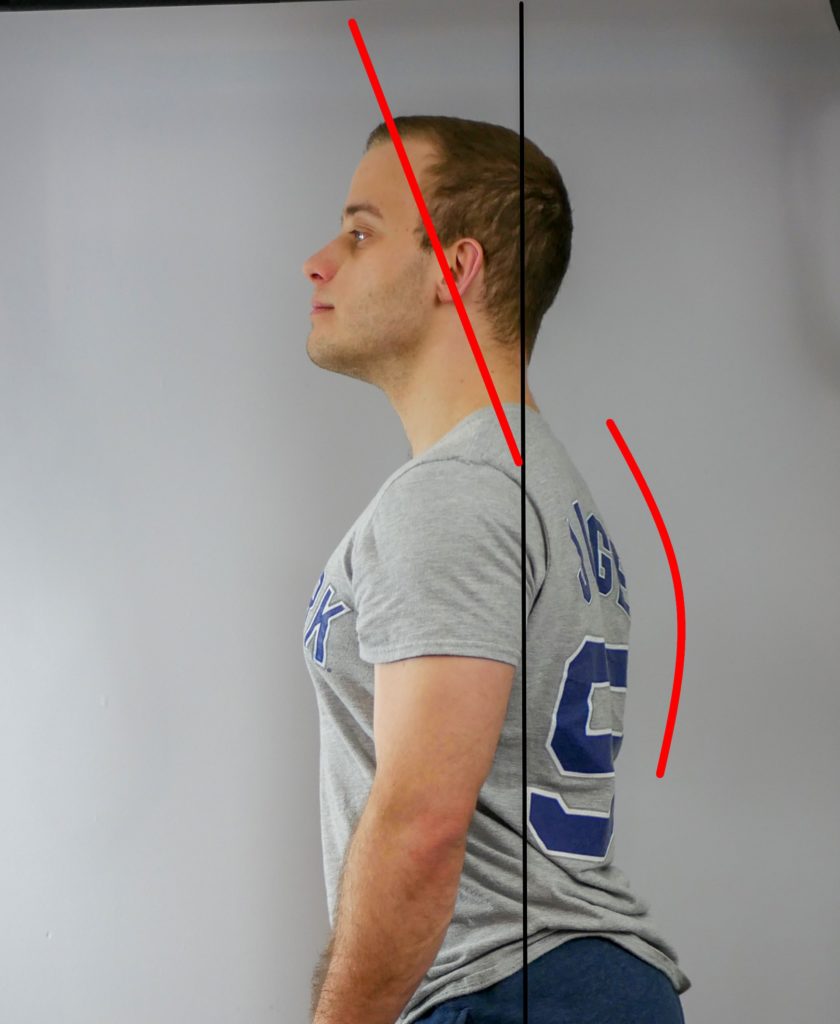
Forward head shift
A muscle imbalance is when the muscles surrounding a joint stop functioning properly. Muscles operate your joints in force couples. A force couple consists of opposite muscles. A good example of a force couple is at the elbow. The biceps control elbow flexion, the triceps perform the opposite motion, elbow extension.
There are force couples in our neck, and all over our body. Many muscles that control and stabilize our forward shifted head become overdeveloped in forward head posture. Conversely, we have opposite muscles that are weakened and must be strengthened to pull our heads back and straighten our posture.
If one of the muscles in a force couple becomes overused and overdeveloped, the opposite tends to become weakened and the force couple will negatively affect joint function.
How does a muscle imbalance happen?
A muscle that contributes to a problem tends to be overactive. Your brain is more likely to fire signals to an overactive muscle. You might use an overactive muscle for tasks and functions even if it’s not the preferred muscle to do so. This can also be viewed as compensation.
Generally, the more you use a muscle, the more developed it becomes. It is possible, although mounting evidence points to the contrary, that an overdeveloped muscle shortens as well. This is a vicious cycle! The theory of addressing this problem lies in strengthening weakened neglected muscles.
Part of restoring function involves addressing overused muscles with release techniques. Stretching is a possible remedy for addressing shortened muscles although the evidence for static stretching doesn’t seem consistent in showing any altered muscle length.
It is essential to understand that in any muscle imbalance we must identify the muscles that contribute TOWARDS the problem and are overactive, but also understand there will be muscles on the opposite side that are weakened. The general approach is to massage, relax, and inhibit the muscles that are contributing to the problem (the overactive muscles), then activate and strengthen the weakened muscles on the other side.
What muscles are involved?
Let’s identify the overactive muscles most commonly responsible for Forward Head Posture. Then let’s learn some techniques to calm them down so we can then activate and strengthen the weakened muscles on the other side.
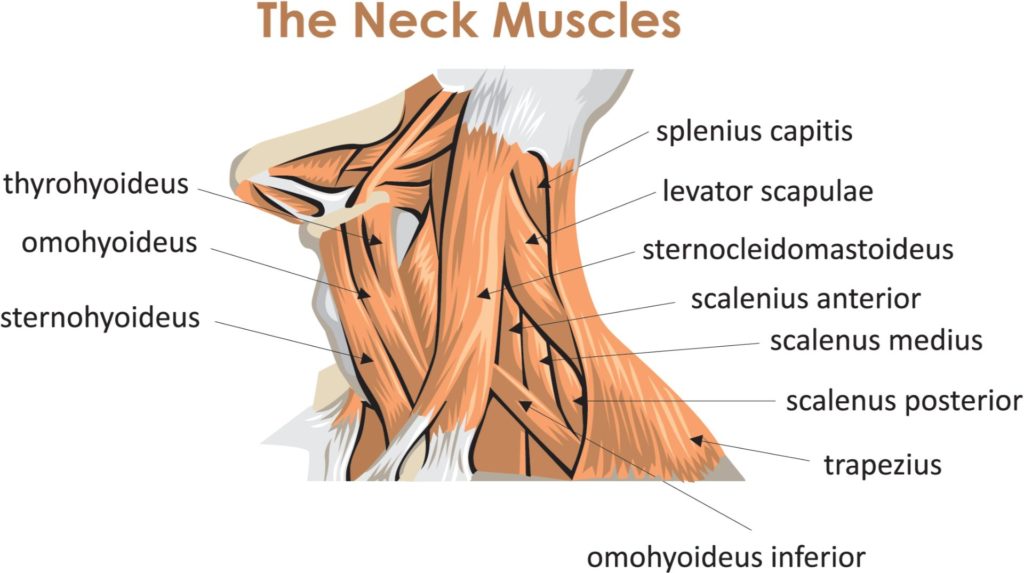
Overactive muscles in forward head posture:
The muscles that are most likely overactive in
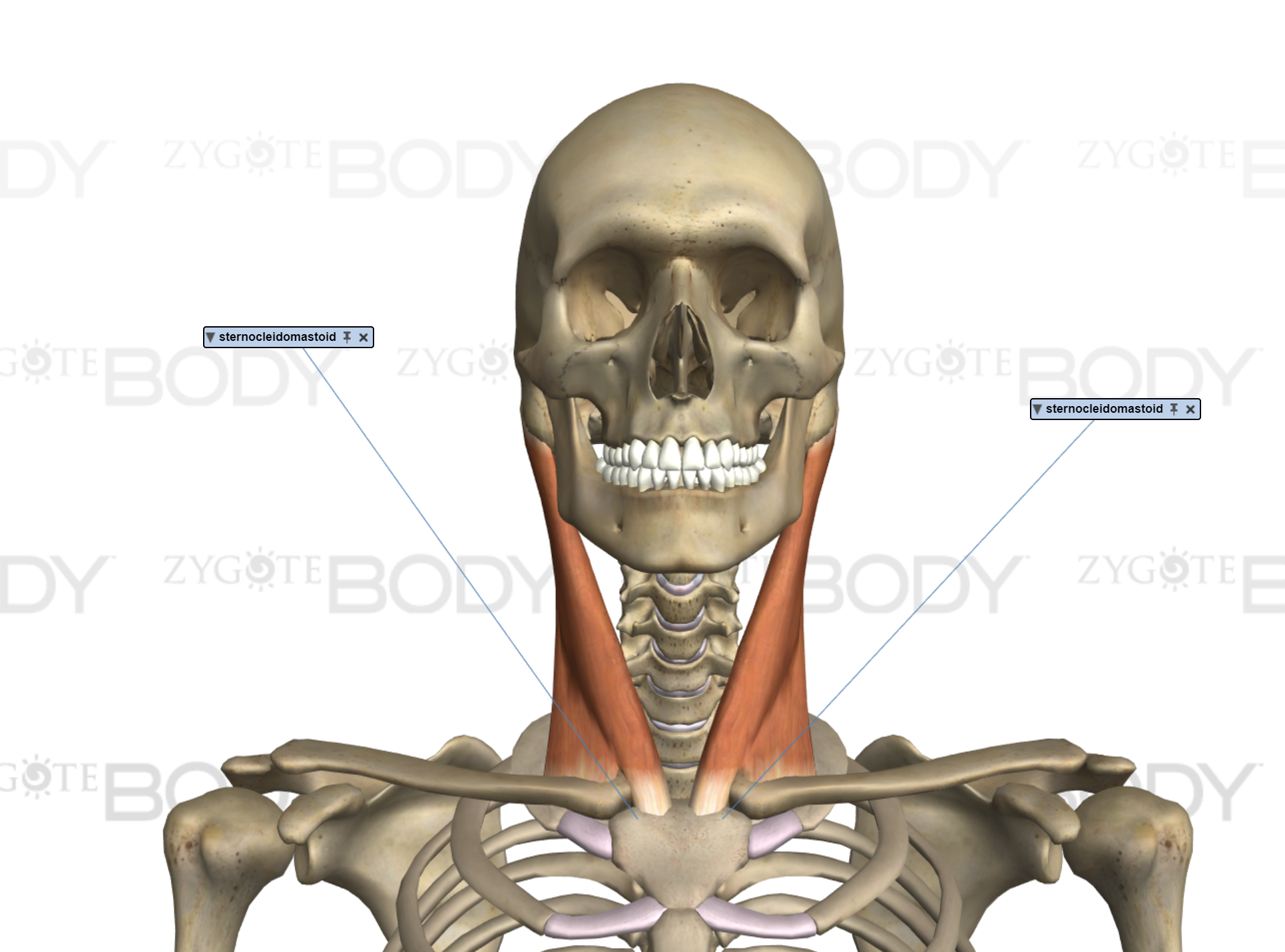
Sternocleidomastoid 
Anterior Scalenes
Underactive muscles in forward head posture:
The muscles that will most likely be weakened and require strengthening with exercises are the muscles in your Upper Cervical Flexor group and your lower cervical extensors. These muscles suck your chin in and pull your head back, maintaining proper posture.
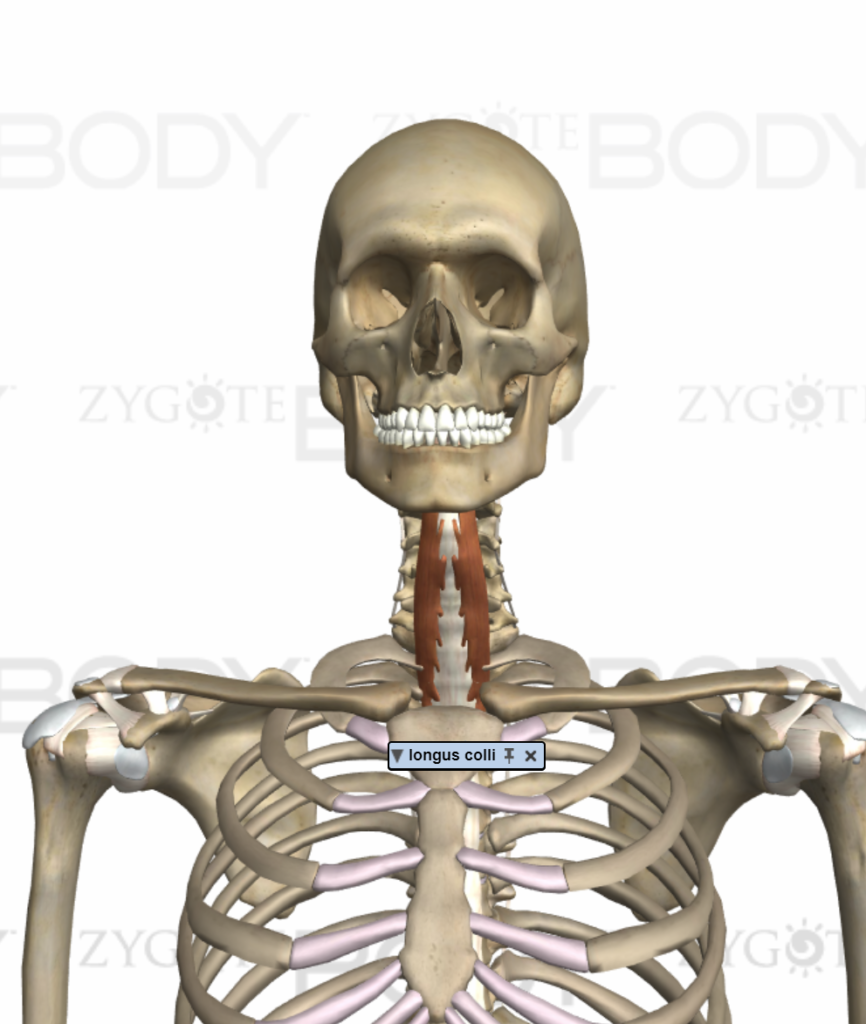
Do you have it?
It’s important to be able to assess if you really have forward head posture. Understanding force couples, we can begin to see how stretching a muscle that is already weakened and lengthened can exacerbate issues. Continuing to strengthen a muscle can make over-activity and imbalances worse as well.
Performing an assessment is where to begin to determine what muscle imbalances you might have. There are several assessments that can be performed to see if any muscle imbalances exist around your head and neck. The standard pushing and pulling assessment is a good test, as well as a simple flat wall test.
Now What?
Consult the Forward Head Posture Corrective Exercises page for techniques to begin to correct this dysfuntion!
